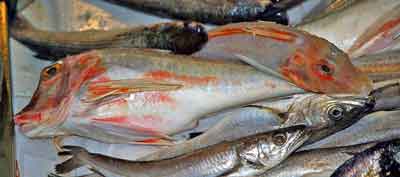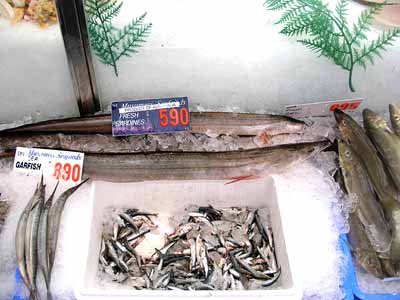
Red gurnard. Gurnards are strange-looking, scaly, spiky, bottom-feeding fish which use the three bottom rays of their pectoral fins to "feel" the sea bed. They have firm-textured white meat with a mild flavour. They are rich in protein, iodine and phosphorus. The red gurnard is the most attractive member of the family with pinkish-red colour and the finest flavour of the gurnards. They are all bony and tend to dryness so they are best served with a sauce. Small ones are excellent in soup. Red or grey mullet (US: striped mullet) can generally be subsituted for it, and are usually better.
Zabaione sauce. A warm, creamy sauce, known to the French as sabayon, made with beaten egg yolks, sugar and Marsala, other sweet wine or Barolo. It can be either sweet or savoury and served as a sauce in addition to the better known dessert.
Twaite shad or gizzard shad from a family of white, migratory fish. The shad is a bony, tasty, oily fish similar to herring, which travels up rivers in spring and is found in deep lakes. In France it is found in the Gironde where it is often grilled over vine shoots or stuffed with sorrel, and in the Loire, where it may be stuffed with beurre blanc. The roe is a great delicacy and shad is also used raw in sushi. Members of the family include Allis shad (Alosa alosa) and the smaller twaite shad or gizzard shad (Alosa fallax).

A small conger eel, sea eel. The crustaceans and fish which form its diet contribute to its own good flavour. It is usually sold in steaks. It has few bones and good firm flesh with excellent flavour. The neck end has a better ratio of flesh to bone so is better for cooking as steaks, whereas the tail end, which is bonier, makes a useful addition to soups and stocks.